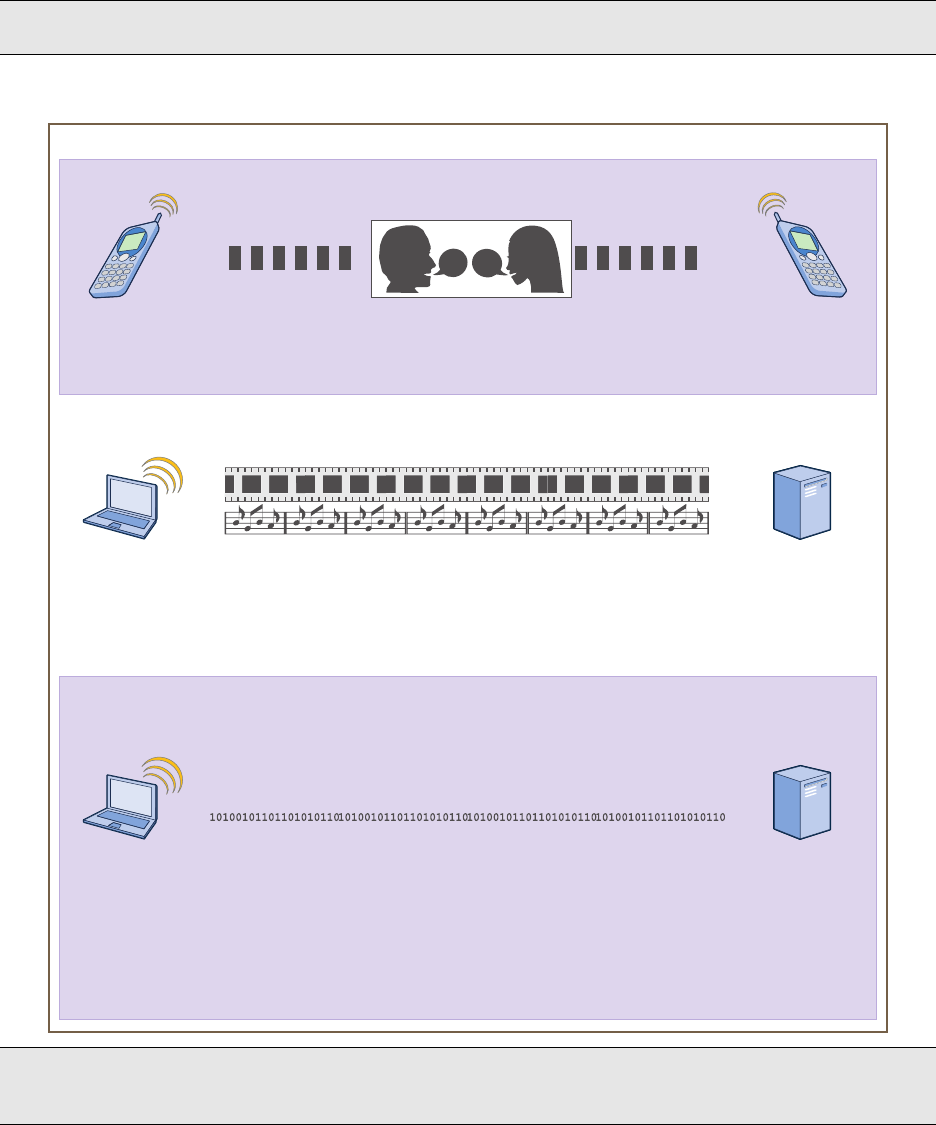User's Manual

Chapter 11 Deployment Examples (CLI)
174 Aerohive
Figure 4 QoS Policy "voice" for Voice, Streaming Media, and Data
Finally, you create a user profile "employee-net" and apply the QoS policy "voice" to the user profile on each hive
member. You also configure the RADIUS server to return attributes in its authentication responses to indicate the
user group to which the hive members then assign users.
Note: The HiveAP assigns all traffic that you do not specifically map to an Aerohive class to class 2, which by
default uses WRR with a weight of 30 and a rate of 54,000 or 1,000,000 Kbps, depending on the HiveAP.
Note: This example assumes that the RADIUS and AD servers were previously configured and populated with user
accounts and have been serving a wired network (not shown). The only additional configuration is to
enable the RADIUS server to accept authentication requests from the HiveAPs.
qos policy voice qos 6 strict 512 0
The policy assigns the highest priority to voice traffic (class 6). For each voice session up to
512 Kbps, hive members provide “strict” forwarding; that is, they forward traffic immediately
without queuing it.
Voice
qos policy voice qos 5 wrr 20000 90
Because streaming media (class 5) needs more bandwidth than voice does, the policy
defines a higher forwarding rate for it: 20,000 Kbps. It sorts streaming media into forwarding
queues using the WRR (weighted round robin) mechanism. It also prioritizes streaming media
by assigning a higher weight (90) than it assigns data traffic (class 3 = 60, class 2 = 30).
Streaming
Media
qos policy voice qos 3 wrr { 54000 | 1000000 } 60
qos policy voice qos 2 wrr { 54000 | 1000000 } 30
*
The policy sorts class 3 and 2 traffic into forwarding queues using WRR and defines the
highest forwarding rate: 54,000 Kbps or 1,000,000 Kbps, depending on the HiveAP model
that you are configuring. It gives class 3 (for e-mail protocols SMTP and POP3) a higher WRR
weight (60) so that the HiveAP queues more e-mail traffic in proportion to other types of traffic
in class 2, which has a weight of 30 by default. As a result, e-mail traffic has a better chance
of being forwarded than other types of traffic when bandwidth is scarce.
Class 2 is for all types of traffic not mapped to an Aerohive class—such as HTTP for example.
Data
QoS Policy: “voice”
* You do not need to enter this command because it just sets the default
values for class 2. It is shown to provide contrast with the previous command.










